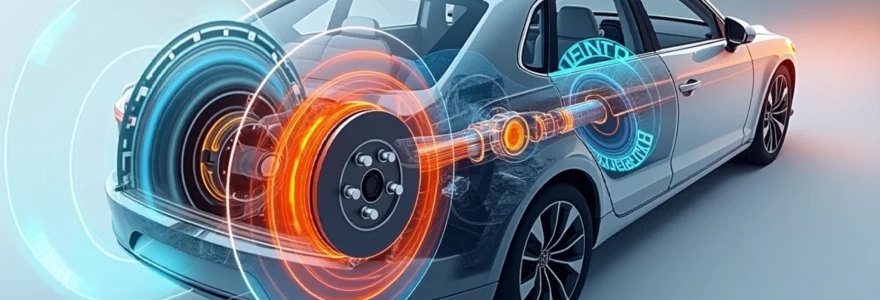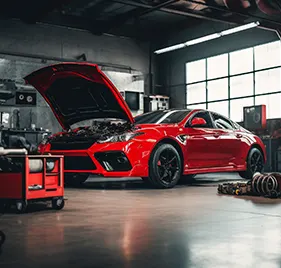Selecting the appropriate brake system for your vehicle is a critical decision that directly impacts safety, performance, and long-term reliability. With numerous options available in the market, understanding the intricacies of brake systems and how they align with your specific vehicle and driving needs is essential. From traditional drum brakes to advanced disc configurations and cutting-edge technologies, the world of automotive braking has evolved significantly. This comprehensive guide delves into the factors that influence brake system selection, helping you make an informed choice that ensures optimal stopping power and peace of mind on the road.
Understanding brake system components and their functions
At its core, a vehicle’s brake system is designed to convert kinetic energy into thermal energy through friction, effectively slowing or stopping the vehicle. The primary components of a brake system work in harmony to achieve this crucial function. These components include the master cylinder, brake lines, calipers or wheel cylinders, brake pads or shoes, and rotors or drums.
The master cylinder serves as the command center of the brake system, converting the force applied to the brake pedal into hydraulic pressure. This pressure is then transmitted through brake lines to the wheel brakes. In disc brake systems, calipers house the brake pads and squeeze them against the rotor to create friction. Drum brake systems, on the other hand, use wheel cylinders to push brake shoes against the inner surface of the drum.
Understanding how these components interact is crucial when selecting a brake system. For instance, the size and material of brake rotors can significantly impact heat dissipation and overall braking performance. Similarly, the composition of brake pads affects factors such as stopping power, noise levels, and dust generation.
Types of brake systems: disc, drum, and hybrid configurations
Modern vehicles employ various brake system configurations, each with its own set of advantages and limitations. The three primary types are disc brakes, drum brakes, and hybrid systems that combine elements of both.
Disc brake mechanics: calipers, rotors, and brake pads
Disc brake systems have become the standard for many vehicles due to their superior performance and heat dissipation properties. In a disc brake setup, a caliper houses the brake pads and uses hydraulic pressure to clamp them against a spinning rotor. This design allows for efficient cooling and consistent performance, even under demanding conditions.
The effectiveness of disc brakes can be attributed to several factors:
- Larger surface area for heat dissipation
- Better resistance to brake fade during prolonged use
- Improved performance in wet conditions
- Easier maintenance and pad replacement
When selecting a disc brake system, consider factors such as rotor size, caliper design (fixed or floating), and pad material. These elements significantly influence braking performance and should be matched to your vehicle’s weight, wheel size, and intended use.
Drum brake anatomy: wheel cylinders, shoes, and Self-Adjusters
While less common in modern vehicles, drum brakes still find applications, particularly in rear brake setups of some economy cars and light trucks. In a drum brake system, hydraulic pressure activates wheel cylinders, which push brake shoes against the inner surface of a rotating drum.
Drum brakes offer certain advantages in specific scenarios:
- Lower production costs, making them suitable for budget-oriented vehicles
- Effective parking brake functionality
- Adequate performance for lighter vehicles with less demanding braking requirements
However, drum brakes are more susceptible to heat-related performance issues and may require more frequent adjustments compared to disc brakes. When considering a drum brake system, pay attention to factors such as drum diameter, shoe material, and the presence of self-adjusting mechanisms.
Hybrid systems: combining disc and drum technologies
Many vehicles utilize a hybrid brake system, typically featuring disc brakes on the front axle and drum brakes on the rear. This configuration aims to balance performance, cost, and functionality. The front brakes, which handle the majority of braking force due to weight transfer during deceleration, benefit from the superior performance of disc brakes. The rear brakes, which experience less demanding conditions, can often suffice with the simpler drum brake design.
Hybrid systems can be an effective compromise for vehicles that don’t require high-performance braking on all four wheels. When evaluating a hybrid setup, consider the weight distribution of your vehicle and your typical driving conditions to ensure adequate braking performance.
Vehicle-specific factors influencing brake system selection
Choosing the right brake system involves more than just understanding the types available. It requires a thorough assessment of your vehicle’s characteristics and your driving habits. Let’s explore the key factors that should guide your decision.
Weight distribution and its impact on braking performance
The weight distribution of a vehicle plays a crucial role in determining the optimal brake system configuration. Front-engine vehicles typically have a weight bias towards the front, which means the front brakes handle a larger portion of the braking force. In contrast, mid-engine or rear-engine vehicles may require a more balanced brake system to ensure stable braking performance.
Consider the following when evaluating brake systems based on weight distribution:
- Front-heavy vehicles may benefit from larger front rotors and more aggressive pad compounds
- Vehicles with near 50/50 weight distribution might perform well with similar brake setups front and rear
- Rear-engine vehicles may require proportionally larger rear brakes to maintain stability during hard braking
Understanding your vehicle’s weight distribution allows you to select a brake system that provides optimal performance and safety under various driving conditions.
Driving conditions: urban vs. highway vs. Off-Road considerations
Your typical driving environment significantly influences the demands placed on your vehicle’s brake system. Urban driving, characterized by frequent stops and starts, requires a brake system that can withstand repeated use without overheating. Highway driving, on the other hand, may involve less frequent but more intense braking events at higher speeds.
For urban environments, consider brake systems with:
- High heat capacity to handle frequent use
- Low-dust pad formulations for cleaner wheels
- Quiet operation for a more pleasant driving experience
Highway driving may benefit from:
- Larger rotors for improved heat dissipation during high-speed braking
- Performance-oriented pad compounds for consistent stopping power
- Advanced cooling designs to prevent brake fade on long descents
Off-road enthusiasts should look for brake systems that offer:
- Sealed components to resist water and debris intrusion
- Durable materials that can withstand harsh conditions
- Adequate clearance for larger, off-road-oriented wheels and tires
Towing capacity and Load-Bearing requirements
Vehicles used for towing or hauling heavy loads require brake systems capable of handling the additional stress. The increased weight not only affects stopping distances but also generates more heat during braking events. When selecting a brake system for a vehicle with high towing or load-bearing requirements, consider the following:
- Upgraded rotors with increased thermal mass for better heat management
- High-performance brake pads designed for heavy-duty applications
- Reinforced brake lines to handle higher hydraulic pressures
- Larger master cylinders to provide adequate fluid volume for heavy-duty brake components
Additionally, vehicles used for towing may benefit from integrated trailer brake controllers and upgraded rear brakes to handle the increased load on the rear axle during deceleration.
Advanced brake technologies for enhanced performance
As automotive technology continues to evolve, brake systems have seen significant advancements aimed at improving safety, performance, and efficiency. Understanding these technologies can help you make a more informed decision when selecting a brake system for your vehicle.
Anti-lock braking systems (ABS) and electronic stability control (ESC)
Anti-lock braking systems have become standard equipment on modern vehicles, significantly enhancing safety and control during emergency braking situations. ABS works by rapidly modulating brake pressure to prevent wheel lockup, allowing the driver to maintain steering control while braking hard.
Electronic Stability Control takes this concept further by integrating ABS with additional sensors and control systems. ESC can selectively apply brakes to individual wheels to help maintain vehicle stability during cornering or sudden maneuvers. When choosing a brake system, ensure compatibility with your vehicle’s ABS and ESC systems to maintain these critical safety features.
Regenerative braking in electric and hybrid vehicles
Electric and hybrid vehicles often employ regenerative braking systems that convert kinetic energy into electrical energy during deceleration. This technology not only improves overall vehicle efficiency but also reduces wear on traditional friction brakes.
When selecting a brake system for an electric or hybrid vehicle, consider:
- The balance between regenerative and friction braking
- Compatibility with the vehicle’s power management systems
- Brake pad compounds optimized for reduced wear in regenerative braking applications
It’s important to note that while regenerative braking can significantly reduce brake wear, traditional friction brakes are still required for emergency stopping and low-speed operations.
Brake-by-wire systems and future innovations
Brake-by-wire technology replaces traditional hydraulic connections with electronic controls, offering several potential advantages:
- Faster response times
- More precise brake force distribution
- Integration with advanced driver assistance systems
- Reduced maintenance requirements
As these systems become more prevalent, it’s important to consider their implications when selecting a brake system, particularly for newer or high-tech vehicles. Future innovations may include further integration with autonomous driving technologies and advanced materials for improved performance and durability.
Matching brake systems to vehicle types and use cases
Selecting the optimal brake system requires a holistic approach that considers the specific characteristics of your vehicle and its intended use. Different vehicle types and use cases demand tailored braking solutions to ensure safety, performance, and longevity.
For compact cars and sedans primarily used for daily commuting, a well-designed disc brake system on all four wheels often provides the best balance of performance and cost-effectiveness. These vehicles benefit from the consistent stopping power and fade resistance of disc brakes, especially in urban environments with frequent stops.
SUVs and light trucks, which typically have higher curb weights and may be used for towing, require more robust braking systems. Large-diameter rotors, multi-piston calipers, and high-performance pad compounds can help manage the increased heat and stress associated with stopping heavier vehicles. For trucks used in severe duty applications, consider upgrading to heavy-duty brake components designed specifically for challenging conditions.
Performance vehicles and sports cars demand brake systems that can withstand high temperatures and repeated hard use. Cross-drilled or slotted rotors, multi-piston calipers, and race-inspired pad compounds are often employed to meet these demanding requirements. Some high-performance vehicles may even benefit from carbon-ceramic brake systems, which offer exceptional heat resistance and reduced unsprung weight.
Off-road vehicles face unique challenges, including exposure to water, mud, and debris. Brake systems for these vehicles should prioritize durability and resistance to environmental factors. Sealed calipers, protective rotor coatings, and pad compounds designed to perform well in various conditions are essential considerations for off-road applications.
Maintenance considerations and Long-Term cost analysis
When selecting a brake system, it’s crucial to consider not only the initial purchase and installation costs but also the long-term maintenance requirements and associated expenses. High-performance brake systems may offer superior stopping power, but they often come with increased maintenance needs and higher replacement part costs.
Factor in the following when evaluating the long-term costs of a brake system:
- Frequency of brake pad replacements based on your driving habits and pad material
- Rotor replacement or resurfacing intervals
- Specialized tools or expertise required for maintenance
- Availability and cost of replacement parts
Consider the trade-offs between performance and maintenance costs. For example, carbon-ceramic brakes offer exceptional performance and longevity but come with a significantly higher initial cost and specialized maintenance requirements. Conversely, a well-designed conventional brake system may offer adequate performance for most drivers while being more economical to maintain over the life of the vehicle.
Regular maintenance is key to ensuring the longevity and performance of any brake system. This includes periodic inspections, proper bleeding of brake fluid, and timely replacement of wear components. By factoring in these maintenance considerations and conducting a thorough long-term cost analysis, you can select a brake system that not only meets your performance needs but also aligns with your budget and maintenance capabilities.

